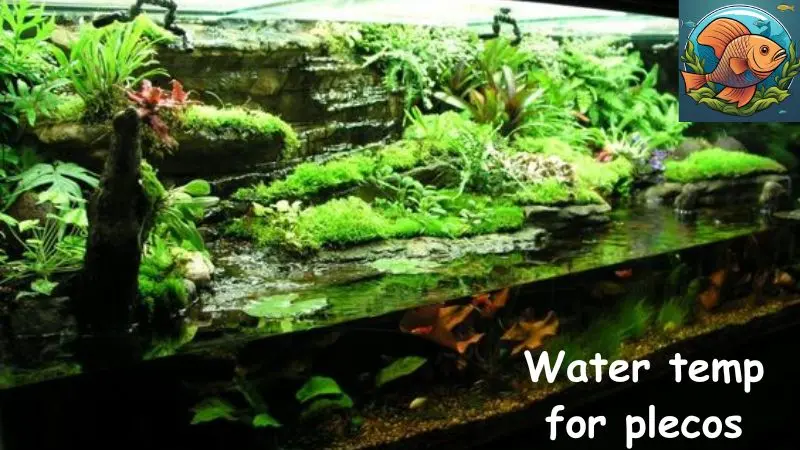fish farming
Water temp for plecos
Plecostomus, commonly known as plecos, are fascinating and popular aquarium fish. These armored catfish, hailing from the tropical regions of South America, are known for their unique appearance, peaceful demeanor, and algae-eating habits. While they are relatively easy to care for, maintaining the optimal water temperature is crucial for their health and well-being. This essay of fishtankmagic.com will delve into the importance of water temperature for plecos, exploring the ideal range, the effects of temperature fluctuations, and how to ensure a stable and suitable environment for these beloved fish.
Water Temp for Plecos: The Ideal Range
The ideal water temperature for plecos is generally considered to be between 72°F and 82°F (22°C to 28°C). This range reflects their natural habitat in the warm, tropical waters of South America. However, it is essential to note that the specific temperature preferences can vary depending on the species of pleco.
For example, the common pleco (Hypostomus plecostomus), a popular choice for beginners, thrives in the lower end of this range, around 75°F to 80°F. On the other hand, the Bristlenose pleco (Ancistrus cirrhosus), known for its distinctive bristles around its mouth, prefers a slightly higher temperature, around 78°F to 82°F.
Factors Influencing Optimal Temperature:
Several factors can influence the optimal water temperature for plecos, including:
- Species: As mentioned earlier, different species have different temperature preferences. It is crucial to research the specific requirements of the pleco species you intend to keep.
- Age: Younger plecos are generally more sensitive to temperature fluctuations than older ones.
- Water Parameters: The overall water quality, including pH, hardness, and ammonia levels, can also affect the ideal temperature range.
- Season: During colder months, it is essential to maintain a consistent temperature, as fluctuations can stress the fish.
The Impact of Temperature Fluctuations on Plecos
Maintaining a stable water temperature is crucial for pleco health. Fluctuations in temperature can cause a range of problems, including:
- Stress: Sudden or drastic temperature changes can cause stress to plecos, making them more susceptible to diseases.
- Immune System Suppression: Fluctuations can weaken the fish’s immune system, making them more vulnerable to infections.
- Metabolic Disturbances: Extreme temperatures can disrupt the fish’s metabolism, leading to digestive issues and slow growth.
- Breeding Difficulties: Temperature fluctuations can interfere with breeding cycles and reduce the chances of successful reproduction.
Understanding the Effects of Different Temperature Ranges:
- Too Cold: Temperatures below the ideal range can cause lethargy, loss of appetite, and increased susceptibility to diseases.
- Too Hot: Temperatures above the ideal range can cause respiratory distress, increased stress, and even death.
Maintaining the Optimal Water Temperature for Plecos
Maintaining a stable water temperature for plecos requires a combination of equipment and practices:
1. Aquarium Heater:
- Choosing the Right Heater: Select a heater that is appropriately sized for your aquarium. The heater’s wattage should be sufficient to maintain the desired temperature range.
- Placement: Position the heater in a safe location, away from direct water flow and any objects that could damage it.
- Calibration: Regularly check the heater’s accuracy using a thermometer to ensure it is maintaining the desired temperature.
- Regular Cleaning: Clean the heater regularly to prevent mineral buildup and ensure proper function.
2. Aquarium Thermometer:
- Accuracy: Choose a reliable thermometer that provides accurate readings.
- Placement: Place the thermometer in a location that is representative of the overall water temperature in the aquarium.
- Regular Monitoring: Regularly check the thermometer to ensure the water temperature remains within the ideal range.
3. Room Temperature Control:
- Insulation: Insulate the room where the aquarium is located to minimize temperature fluctuations.
- Air Conditioning/Heating: Use air conditioning or heating systems to maintain a consistent room temperature, especially during extreme weather conditions.
4. Water Changes:
- Regular Changes: Perform regular water changes to remove impurities and maintain water quality.
- Temperature Matching: Ensure the replacement water is at the same temperature as the aquarium water to avoid sudden temperature changes.
5. Acclimatization:
- New Fish: When introducing new plecos to the aquarium, acclimate them gradually to the water temperature. This involves slowly raising or lowering the temperature of the new fish’s bag to match the aquarium temperature.
6. Monitoring:
- Visual Observation: Observe your plecos for any signs of stress or illness, such as lethargy, loss of appetite, or changes in behavior.
- Water Testing: Regularly test the water parameters, including temperature, to ensure they are within the ideal range.
Additional Tips for Maintaining Optimal Water Temperature:
- Avoid Direct Sunlight: Direct sunlight can cause the water temperature to rise rapidly.
- Avoid Overcrowding: Overcrowding can lead to increased stress and temperature fluctuations.
- Use a Filter: A good filter helps maintain water quality and can contribute to temperature stability.
- Consider a Chiller: In warmer climates or during hot summer months, consider using a chiller to maintain the desired temperature.
Conclusion: The Importance of Water Temperature for Plecos
Maintaining the optimal water temperature for plecos is crucial for their health, well-being, and longevity. By understanding the ideal temperature range, the effects of temperature fluctuations, and the methods for maintaining a stable environment, you can provide your plecos with the best possible care. Remember to research the specific temperature requirements of your pleco species, monitor the water temperature regularly, and take steps to address any fluctuations. By doing so, you can ensure that your plecos thrive in their aquatic home.












